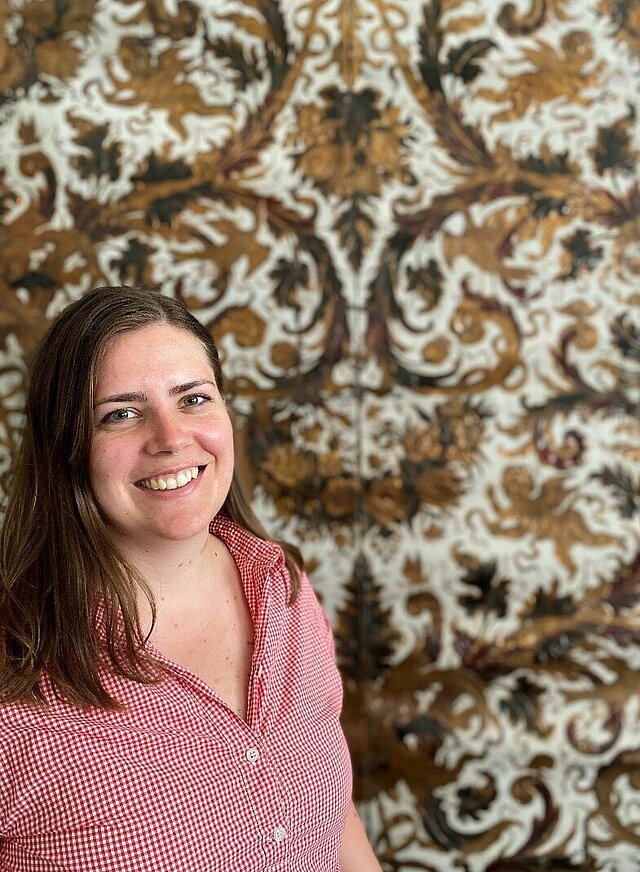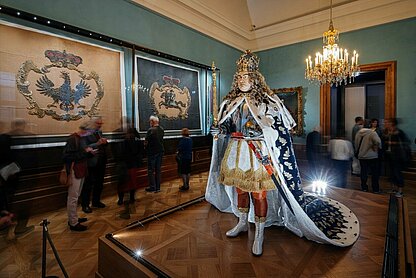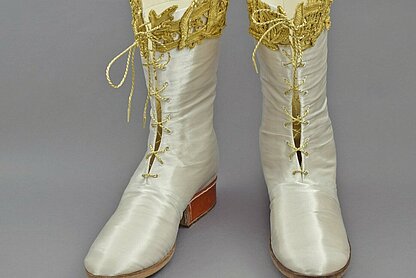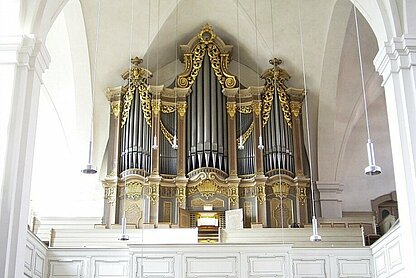This was not the first time that FILK supplied leather for the restoration of precious, historic leather wallpaper. In Moritzburg Castle near Dresden, too, ornately decorated leather wallpapers adorn the walls of numerous halls that were restored in the course of extensive renovation work. At that time, the historic leather wallpapers were analyzed and parameters for new restoration leathers were defined in a joint research project with the Saxon State Office for the Preservation of Historical Monuments, funded by the German Federal Foundation for the Environment. In a second step, a vegetable tanning process was then developed to produce leathers with properties as close as possible to the originals. The purely vegetable-tanned leathers are suitable for ornate decoration and are highly resistant to aging.
Now the Norwegian National Museum of Art, Architecture and Design in Oslo is also drawing on the expertise of the Freiberg researchers. The Norwegian National Museum of Art, Architecture and Design is using leather from the FILK Institute in a major project to restore gold leather wall hangings from the 17th century. "Because we wanted a high-quality product from producers who are willing to provide information about the tanning agents and how they are used, we chose leather from FILK. This way we know that the leather does not contain any substances that could react with the original gold leather wall hangings. We are very satisfied with the leathers from FILK," said restorer Vilde Dalåsen.
The coronation figure of Augustus the Strong in Dresden's Residence Palace also wears leather from Freiberg. The very white and soft glacé leather was once developed for the restoration of historical organs.
The wallpaper leather is not the only leather product for restoration purposes with which FILK supports the preservation and reconstruction of art and cultural objects. Years ago, a very old tanning process was revived at the Institute for the restoration of historic organs in the region. It produces very white and soft leathers called glacé leather. This leather, originally developed as glove leather for French officers, has also been needed for centuries to seal valves and as pipe caps for organ pipes. When the old white tanning process is used, the tannery becomes a bakehouse. For the tanning process, alum salt, egg powder, flour and water are used, among other things, which makes the leather highly filled and particularly white and soft.
This glacé leather was recently used for the faithful reconstruction of the figurine "August the Strong". The coronation figurine of the Elector of Saxony and King of Poland was created on the occasion of his 350th birthday and can be seen in the Dresden Residence Palace. The feet and legs of the figurine are adorned with boots made of Freiberg glacé leather, which is additionally covered with a silver fabric. The boots were made by the Preiß custom shoemaker in Dresden.
When the restorers at the State Art Collections set to work on the figurine, they remembered Freiberg's expertise in recreating ancient tanning processes. "As a student of painting restoration, I had already been in contact with FILK in 2008 in the project to restore the leather wallpaper in Moritzburg Castle. At that time, the castle's restorers were able to develop a suitable leather. When we then received the order for the coronation figurine, it was good that we had a competent contact for the topic of leather with FILK. As with the wallpaper and organ leathers, it was important that the leather did not react with other materials," says Stefanie Penthin, restorer at the Staatliche Kunstsammlungen Dresden.
The coronation figure can be seen in the permanent exhibition in the Great Picture Cabinet in the Residence Palace in Dresden.




